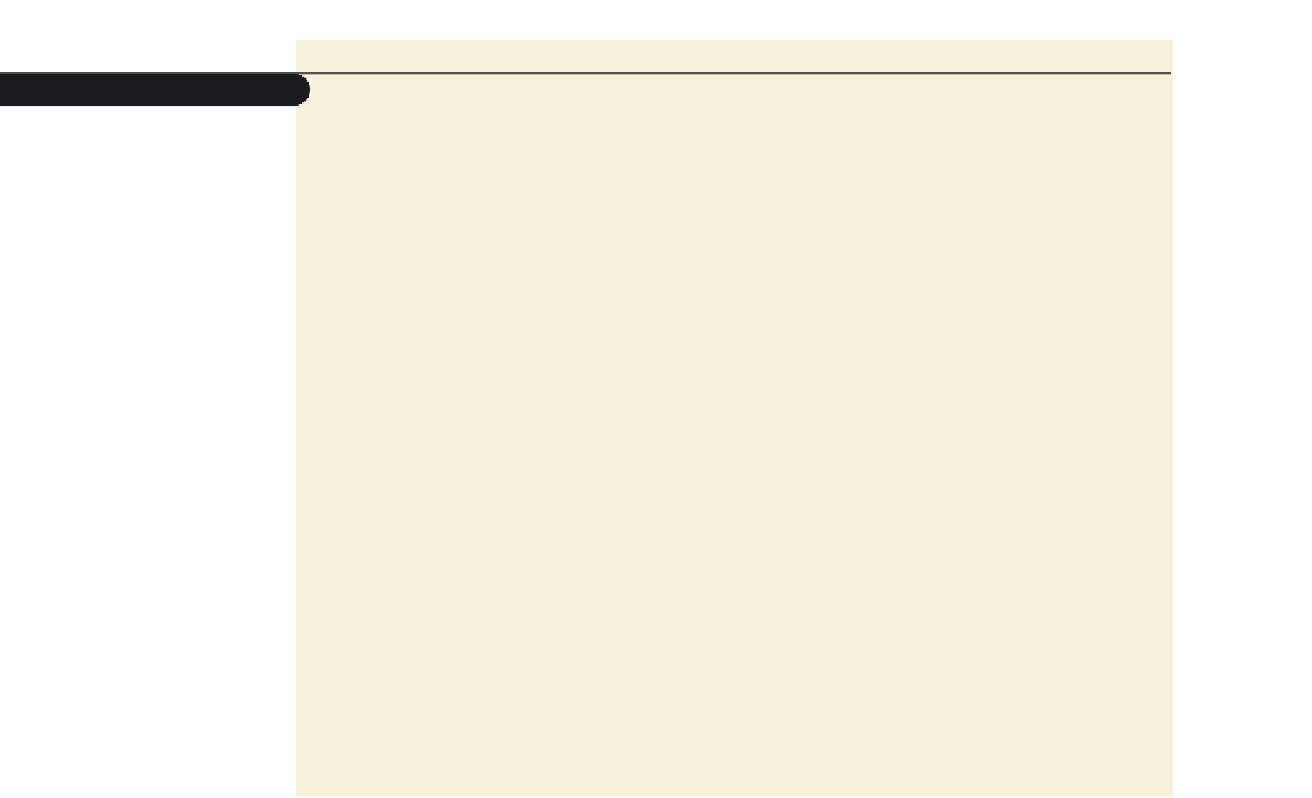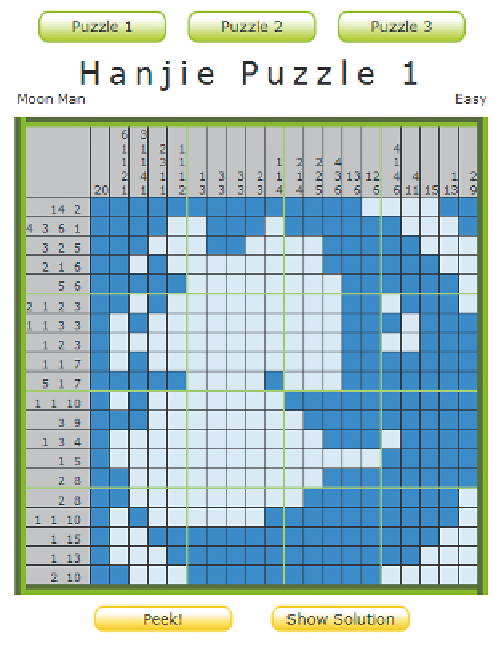HTML and CSS Reference
In-Depth Information
Figure 13-8
Displaying the first puzzle
The
outerHTML
Property
The
innerHTML
property did not officially become part of the document object model
until the HTML5 DOM. It was previously part of only the IE DOM, though it also was
supported by all other major browsers because of its usefulness in creating dynamic
content. The HTML5 DOM also introduced another property,
outerHTML
, which also
can be used to change the HTML code contained within an HTML element. The differ-
ence is that the
outerHTML
property replaces both the element's content and the element
itself, while the
innerHTML
property only replaces the element's content. For example, if
a document contained the
h1
element
<h1 id=”intro”>The Japanese Puzzle Factory</h1>
then running the command
document.getElementById(“intro”).outerHTML = “<h2>Hanjie Puzzle</h2>”;
would replace the entire HTML code including the opening and closing
<h1>
tags
and the
id
attribute. After this command was run, the document structure would have
changed and there no longer would be an
h1
element with that id; thus, any subsequent
command that tried to locate such an element would return an error message. For this
reason, you should use caution when applying the
outerHTML
property.


